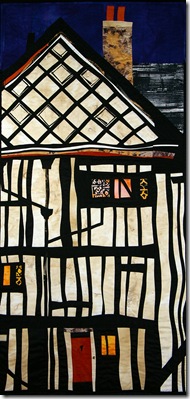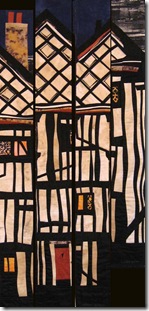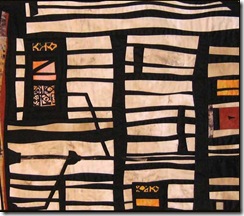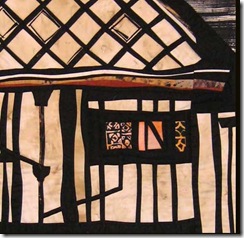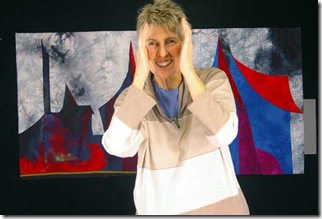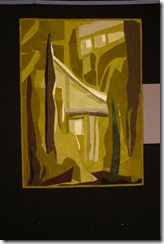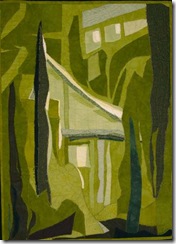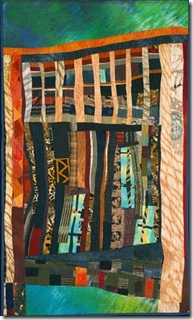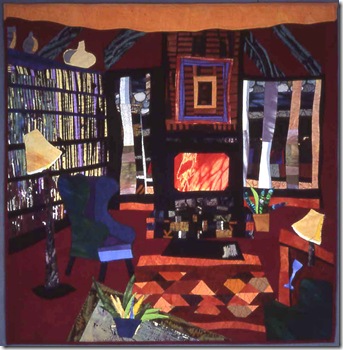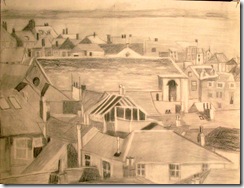I’ve continued to read about creativity – there’s a bunch of books and articles out there. Of course many are mainly waffle + anecdotes and you really have to sift through the dross to find the few nuggets. I do wish the authors of some of these books would just insert a Key for those who can Think but don’t have much Time! A sort of condensed version! Also, I read all your interesting comments from my last blog on this topic and most feel that creativity definitely could be encouraged and some thought that it could be taught. (I’m going to explore that idea further in a later blog when my researches are a bit further along!)
It seems like an effective Creativity Kit would include the following:
A medium and skills within that medium
Encouragement at the least, and excellent teaching/coaching at the best.
Time
Imagination
Medium
Imagination is what happens in your head, but creativity is imagination realised in visible (or audible etc) form. Children have wonderful imaginations but don’t (usually) have the skills within any given medium to fully realise their wildly imaginative thoughts. Obviously there are exceptions, like Mozart. But when you examine the lives of such exceptions, they almost always have had a parent coaching away from the child’s earliest days. We tend to ignore that part of it ; we think “I could never be a good dancer, musician, poet etc. because I don’t have “the talent””. Obviously for some mediums there are some physical attributes that help – a galumphing six foot girl would not a gymnast make – but for the most part, it’s the specific training within the medium that allows the person to realise their creativity. So our first task if we want to be creative is to get good at doing something!!! Whether it’s singing, dancing, painting, quiltmaking, writing, throwing pots (presumably not at others!) and so on.
Training and Encouragement
While you certainly can teach yourself many things, having a good teacher definitely is a short cut, plus you’ll probably learn much better. I taught myself to swim by balancing on a piano stool on my stomach reading the book of instructions positioned on the floor beneath me! My girls had a good coach and access to swimming pools from the age of 3. Guess who swims better? Also they had encouragement, all I got was “wotthebloodyhell are you doing now?”!!! Encouragement is key. There are lots of people whose imagination was incredibly well realised – take the Beatles for example – without training, but they had tremendous encouragement from their peers. It’s well known that artists thrive in groups. The Blau Reiter group in Germany all produced magnificent works (some of my favorite painters) and introduced major new ideas into painting – because they were feeding off each other (and other things too but we don’t need to do that!).
Time
There’s no doubt it takes time, and a lot of it, to be creative. There are no wonderfully creative people who produced amazing things by working at them for one hour a week!!! sadly, magic doesn’t happen – despite all those books that promise it!! If you want to be a creative person, think about at least two hours a day, preferably much more.
Imagination
The art of producing original thoughts…there are some that feel this can be taught and I hope to write more on this later when I’ve fully researched just exactly what methods have been proposed and how successful they really are. What I’ve read so far is either airy-fairy, directed at producing a new widget and making a lot of money or drug-induced! But, I’ll get there! And if I can’t find anything, then I’ll set my cogitation cape on and figure out how one could be more imaginative…to begin with simply try the following exercise as you do any mundane task that doesn’t require your full brain: Say to yourself I must think 3 thoughts that begin “Imagine if….” and let me know how it works!
One of the emails I received following my last blog was the following (reproduced with permission) from Sarah Elizabeth Brown in Canada. Her story illustrates the importance of all of the above: being skilful at a particular medium, getting encouragement from others, and, above all, time to think and to play.
“Like you, I believe anyone can be creative. Or more accurately, that everyone is creative, but perhaps they aren’t creative in the ways that our society/culture/etc. define as “creative.” For the longest time, I thought I wasn’t creative because I can’t draw very well. Actually, I’m terrible. Even my stickmen are embarrassing. It’s not a lack of hand-eye co-ordination – I played a variety of sports through school and university and I did adult-level cross-stitch at the age of eight. It’s that my younger brother is a truly gifted visual artist. He was always the “artist” in the family. I can’t draw like him, I can’t teach myself guitar like him, I don’t know colour theory like him, therefore I’m not officially creative. My brother now works at a paint store, mixing paint, as a way to finance his art, which evolved from painting (he still does some), to making stop-motion animated films that are truly, truly creative. Odd, haunting, and really original. But despite the fact I worked as a newspaper reporter, stringing thousands of words together each day so that other people could go to places, meet people and see things they wouldn’t otherwise experience, I didn’t think of myself as creative. But a funny thing happened when I discovered quilting ... I started to think of myself as creative. My first quilt was from a commercial pattern. But then I discovered all the wonderous fabrics out there and started to get ideas from blogs, matching up things I’d seen online with fabrics, and fabrics with people I know, and the next thing I knew I was creating quilts of my own that meant something to the recipient (food fabrics + foodie friends = great excuse to quilt!). My quilts are evolving as I learn new things and get more and more ideas. I’m nowhere near your level of art quilting, but it’s where I’m headed. And this summer, when I was home visiting my parents and brother, showing off my latest quilt tops, my mom told my brother that maybe he wasn’t the only artist in the family. Funny eh?
I believe that time is where creativity comes from. Free time, enough time to be bored and for your mind to start to wander, time in which to stare at your materials or the world around you and get inspiration or see the connections between this fabric and that fabric. When I sit in my sewing room and avoid studying (switching careers and going back to college), I stare at my fabric collection. In all that time, the pages of my quilting notebook are filling up with all sorts of great ideas for new quilts.
I recall an interesting thing said by someone in the hockey/raising kids realm. He was talking about the difference between the grinder players – the ones who are solid, but not truly creative when it comes to making plays – and the truly creative athletes, who seem to make fabulous plays out of nothing-special situations on the ice or field or court. He said something along the lines of that kids needed to be less structured, that the kids who played endless games of road hockey or pick-up basketball rather than endless structured drills at pricey hockey or basketball camps were the ones who developed that gift of athletic artistry. Yes, sports are an art form too. Like visual or performing arts, it’s using your mind and body to see opportunities and make something beautiful. Watch a nifty triple play in baseball or a jaw-dropping play on the ice or field involving several players and you realize that true creativity is at work. A perfect give-and-go is a piece of art.But the thing behind it is time. Lots and lots of time spent practicing, experimenting with moves that your clipboard-toting coach says is too risky, and most of all, playing. You know those jokes about buying a toddler an expensive gift and all they want to play with is the box? Or how about kids who make fabulous dramatic productions and entire worlds with nothing more than a sheet, mom’s pearls and the couch cushions? We don’t need stuff and doodads and iPhones and personality quizzes to make us creative. We need time to make connections between what’s around us and the ideas in our heads.
When I was 26 and getting bored with the newspaper job I had at the time, I went travelling. I spent three weeks in Singapore and India with an Indian friend and her family, and then four glorious months alone in New Zealand, hiking mostly. Before I left, my mom made me take a journal to write in. I whinged, saying it was hippy-dippy. I didn’t think I would write a word, but when I was in India and seeing a culture entirely different from my own (and I spoke exactly zero of the language), I had time to just watch people. Not wanting to forget any of it, and unable to talk to most of the people around me, I wrote down everything I saw. When I was in New Zealand and seeing places fantastically beautiful, but having no one to turn to and say “Wow, isn’t that gorgeous?”, I wrote down what I saw. I wrote and I wrote and I wrote. Page after page, I described everything in minute detail, from the mountain views to shells on beaches to the antics of my fellow travellers. I was travelling with no set schedule and was taking multi-day breaks between hikes to rest my knees, so I had the time.
But I didn’t realize what a gift I’d had in that time away until I got home and started my next job. All of a sudden, I discovered my writing had improved drastically. It was pretty good before, but now I could look at an event, place, person, thing and really “see” it. And then find words that got the essence or fascinating part of it across to readers. In newspaper lingo, it’s often called “colour” writing. It’s the feature writing that transports you to another place, rather than the dry-as-dust stuff of which politician is lying today and what company bought what other company. All of a sudden I was being complimented on my writing, for making interview subjects feel like someone “got” what they were trying to say, for taking readers into homes and workshops and whole worlds they’d never been to. It was so cool. I was officially creative. All it took was some time away from the daily grind of daily news to practice writing what I saw in order to be able to really write what I really saw.
So in a really long-winded, roundabout way, I think time and creativity are fundamentally connected. Throw in playing and travel and you’ve got yourself a masterpiece brewing somewhere. And parents, encourage your kids to travel, especially off the beaten, scheduled, planned path. I’ve been to university and it was OK (it gave me some journalism skills with which I was able to make enough to eat), but it was the five months of travel that really educated me.”
thank you, Sarah! And thank you everyone for reading, and for commenting!! the dialogue is great.
Elizabeth
